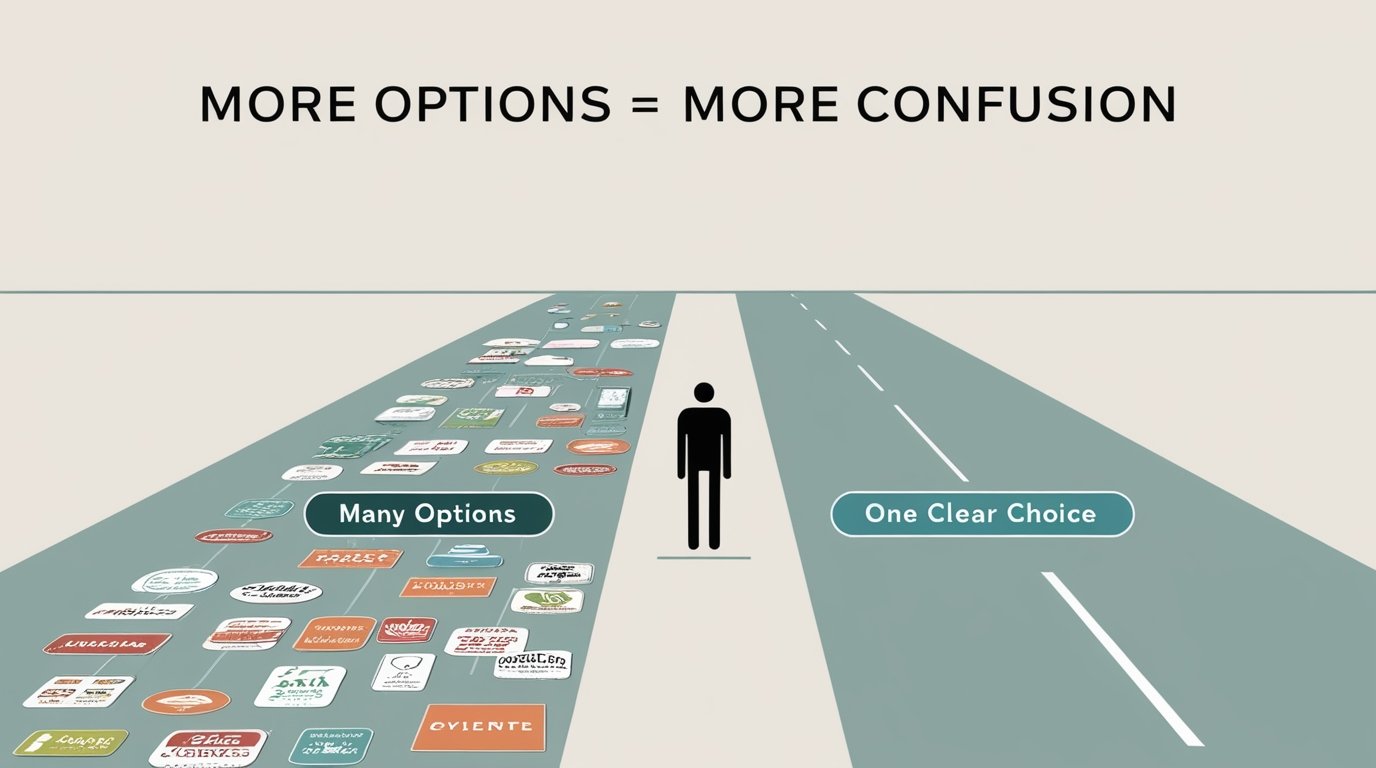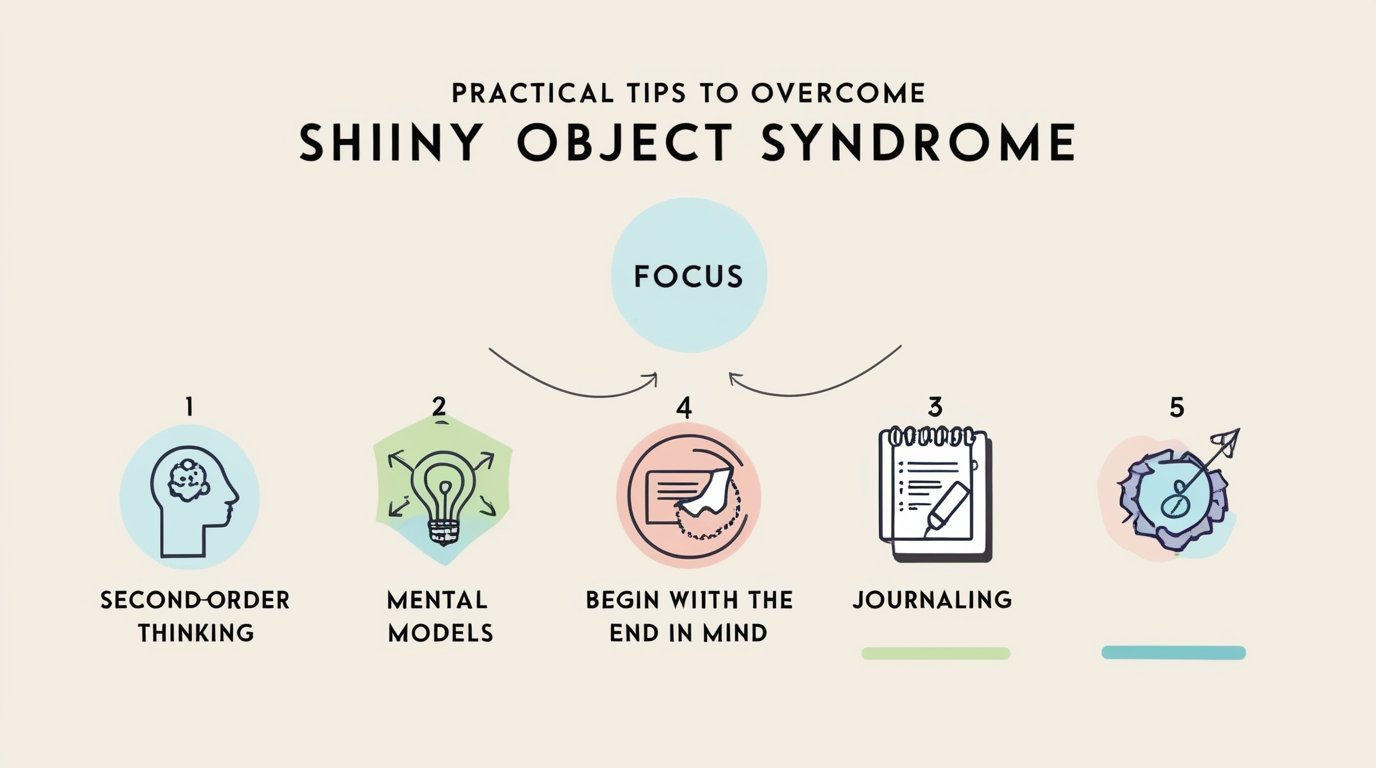Introduction
Imagine you’re working towards a big goal, like starting a business or studying for your exams. Suddenly, a new opportunity grabs your attention. It feels exciting, and you want to explore it, even if it takes you away from your current path. This is Shiny Object Syndrome (SOS)—when new ideas, distractions, or opportunities pull you away from what truly matters. While this may seem harmless, SOS often leads to mental stress, decision fatigue, and ultimately leaving valuable long-term goals behind. In this blog, we’ll explore how to recognize and overcome SOS and stay focused on what really matters.
Table of Contents
What Is Shiny Object Syndrome?
Shiny Object Syndrome (SOS) happens when we lose focus on our primary goal because something new and exciting catches our attention. Picture this: You have two ways to solve a problem, like 5+5 = 10 or 9+1 = 10. If you keep switching between methods without sticking to one, you’ll never solve it efficiently. This is exactly what happens in SOS—you start with a clear goal, but then you get distracted by new opportunities, leaving your original goal unfinished.
Example: You start a business, but halfway through, you hear about a new, trending market. Instead of completing what you began, you shift focus, hoping for faster results. This leads to incomplete projects and wasted time.
The Brothers of Shiny Object Syndrome: Distraction & Defocus
SOS is closely linked with distractions and defocus. Distraction is when something outside of your control, like social media or random notifications, pulls your focus away. Defocus, on the other hand, is internal—it’s when your brain starts wandering and thinking about new things instead of staying on task. The result? You lose track of your goals and your mission.
Relation of FOMO with Shiny Object Syndrome
One of the main reasons we fall into Shiny Object Syndrome is FOMO (Fear of Missing Out). We see others jumping onto new trends or pursuing different ideas, and we fear being left behind. So, we start chasing shiny objects, hoping to not miss out on the next big thing. However, FOMO only adds to our distractions and pulls us further away from our long-term goals.
More Options = More Confusion: The Paradox of Choice
Have you ever been overwhelmed by too many options? This is the paradox of choice. The more options you have, the harder it becomes to make a decision. For example, if you’re shopping online and have 10 different brands of the same product, it can take longer to decide which one to buy, leading to mental stress and decision fatigue. This same concept applies to goals—when you’re presented with many new opportunities, you get confused, stress builds up, and you may end up abandoning your current plan altogether.

Shiny Object Syndrome vs. Distraction: The Difference
While distraction takes your focus away from what you’re currently doing (e.g., checking your phone while studying), Shiny Object Syndrome goes deeper. It’s when you actively pursue a new project, abandoning what you’re currently working on because you believe this new path will lead to better results. This constant switching prevents you from making meaningful progress in your goals.
Long-Term and Short-Term Impact of Shiny Object Syndrome
The effects of Shiny Object Syndrome may not seem significant in the short term. You might think, “It’s just a new idea, I’ll check it out.” However, the long-term effects can be damaging:
- Personal Life: You never truly commit to personal growth because you’re always moving from one idea to another.
- Health: Constantly switching goals causes stress and anxiety, leading to burnout.
- Career & Academic Development: You’ll struggle to succeed because you’re constantly changing focus instead of mastering one skill or subject.
Example: You start a course to improve your career skills, but halfway through, you hear about another course that seems more exciting. You drop the first one and start the new one. This cycle repeats, leaving you with incomplete courses and no real skill development.
Benefits of Shiny Object Syndrome (When Done Right)
While Shiny Object Syndrome is usually harmful, there are situations where it can be beneficial—if used for research purposes. Exploring new ideas can sometimes lead to valuable insights or better strategies. However, the key is not to abandon your primary goal. Instead, research should complement your main mission.
Reasons for Shiny Object Syndrome and Distraction
Understanding why you fall into Shiny Object Syndrome can help you avoid it. Some common reasons include:
- Lack of Clarity: Without a clear goal or mission, you’re more likely to chase every new idea that comes your way.
- FOMO: The fear of missing out drives you to try new things, thinking they’ll bring better results.
- Boredom: When a project becomes difficult or slow, you’re tempted to pursue something more exciting.
- Instant Gratification: We want quick results, and SOS offers the illusion of progress—even when it doesn’t deliver.
The Power of One Thing
One of the best ways to overcome Shiny Object Syndrome is to embrace the Power of One Thing. Focusing on one goal or project at a time helps you put all your energy and resources into that single mission, increasing your chances of success. It’s like planting a tree—if you keep uprooting it to plant elsewhere, it will never grow.
Tips for the Power of One Thing:
- Commit to one major goal at a time.
- Set clear, realistic deadlines.
- Break down the goal into smaller tasks and focus on completing them one by one.
Practical Tips to Overcome Shiny Object Syndrome

Here are some actionable ways to avoid Shiny Object Syndrome and stay on track with your life goals:
- Second-Order Thinking: Before jumping into a new idea, ask yourself, “What will be the long-term impact of this decision?” By thinking about the second-order consequences, you’ll be able to make smarter choices.
- Mental Models: Use models like the Pareto Principle (80/20 rule). Focus on the 20% of tasks that bring 80% of the results. This reduces distractions and keeps you on track.
- Begin with the End in Mind: Always start by thinking about the end goal. What do you want to achieve? How will this new idea help you get there? This mindset ensures that every action aligns with your long-term mission.
- Set Boundaries: If you know you’re prone to SOS, create boundaries to avoid distractions. For example, allocate specific times for exploring new ideas without letting them take over your main goal.
- Journaling: Keep a journal where you track your progress and reflect on whether you’re sticking to your main goals. This keeps you accountable.
Conclusion
Shiny Object Syndrome can feel like an exciting adventure, but it often pulls us away from achieving true success. By recognizing the signs of SOS and understanding how distractions, decision fatigue, and FOMO impact our lives, we can take control of our focus. Stay committed to one clear goal, practice second-order thinking, and always begin with the end in mind. Remember, more options = more confusion—so stick to what truly matters and watch your success grow.




